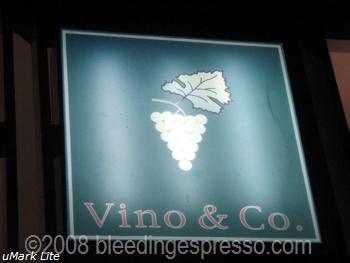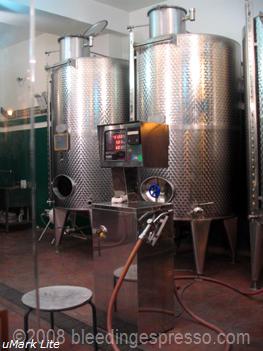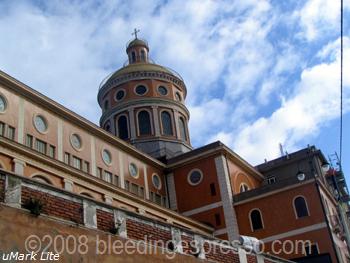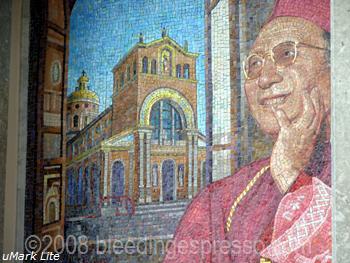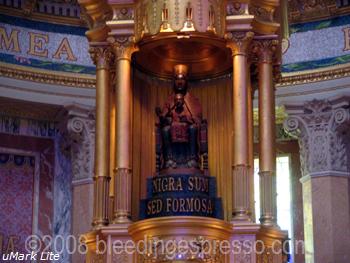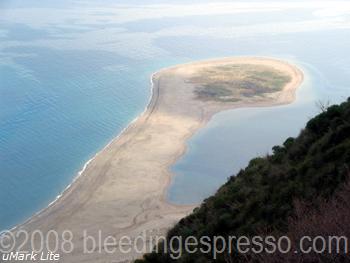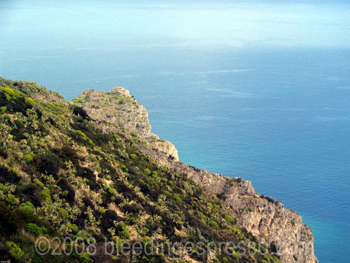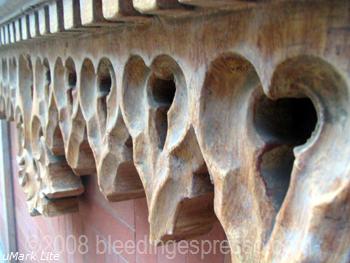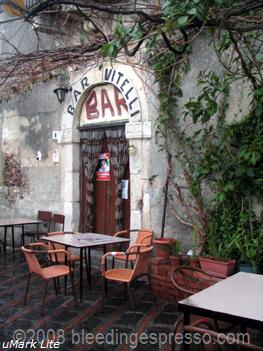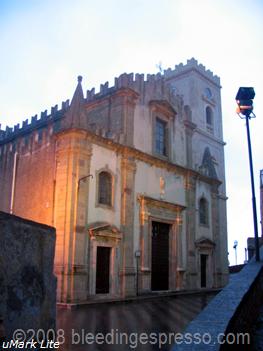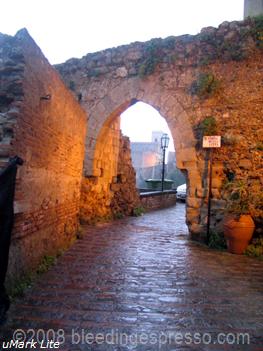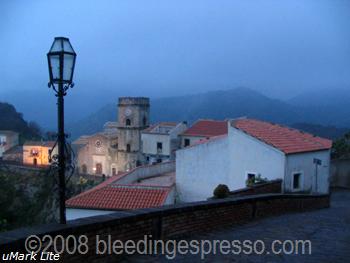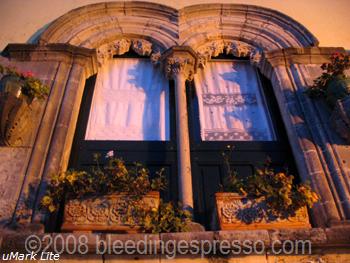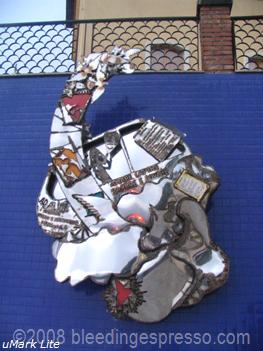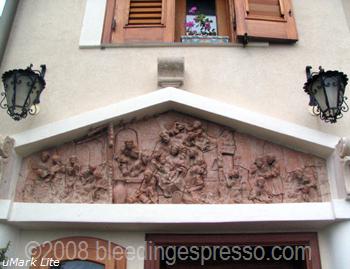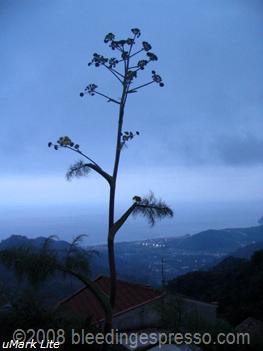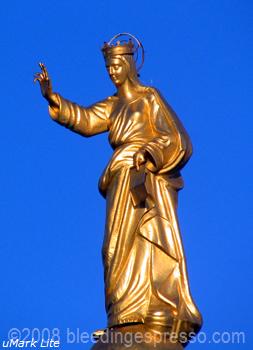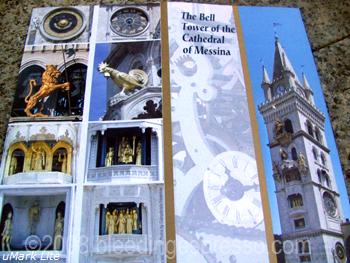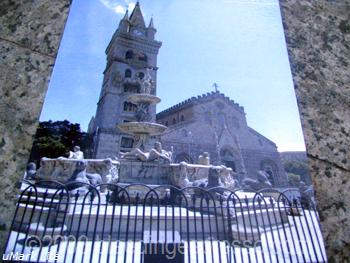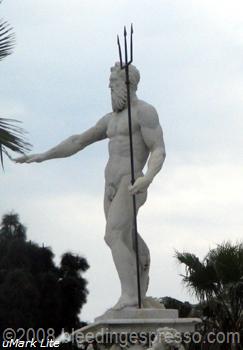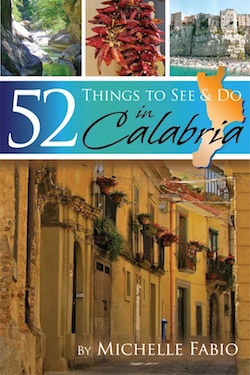Archive for the ‘sicily’ Category
Celebrating St. Patrick with Vino & Co. in Palermo, Sicily
Today is the day when the Irish all over the world celebrate the patron saint of Ireland, St. Patrick.
Italia’s day is coming soon (Wednesday for San Giuseppe to be exact), but far be it from me not to join in the festivities with my Irish brothers and sisters.
After all, I may be just a wee bit Irish as I had a great-great-grandmother by the name of Maggie Kennedy.
I’m not into the green beer thing, I’m afraid, but I will offer up some vino for the occasion; how about a fabulous red from Vino & Co. in Palermo, Sicily?
I personally can’t think of a better excuse to take an empty 5-liter jug and head to a filler station like this one.
This was just a few minutes from our hotel, but unfortunately, Cherrye and I didn’t plan ahead and bring a container large enough–no regular old plastic bottles allowed.
But back to the green-themed day, I also found this page for those of you in need of some last minute party supplies that will also make you laugh as you’re browsing. The faces on some of these models are just hilarious.
And, I guess, effective because a lot of this stuff is actually sold out. Go figure.
Happy St. Patrick’s Day to those celebrating!
The Sanctuary of the Black Madonna in Tindari, Sicily
* Have you joined The Ultimate Blog Party? See my welcome post here! *
We’re back in Sicily today, dear readers, to visit Tindari (Tyndaris), an ancient Greek settlement in the comune of Patti.
I’ll tell you more about the history of this once vibrant city overlooking the Tyrrhenian Sea another day when we tour the ruins of Tindari, but today’s feature is the Sanctuary of the Black Madonna (Santuario della Madonna Nera).
The original church, which had been built on top of the old city’s ruins, was destroyed by Algerian pirates in 1544, then reconstructed between 1552 and 1598; the sanctuary was expanded in 1979 when a new, larger church was built on the site.
The whole grounds are just lovely; indeed, here is a fabulous mosaic that you’ll see on the walk up to the church doors. I don’t know who he is, but he sure looks peaceful and content, doesn’t he?
I should mention that the phenomenon of Black Madonnas around the world is interesting in and of itself, and you can read more about it here.
The Black Madonna in Tindari, carved of cedar, has a few legends attached to her, some of which include how she got there in the first place.
One legend says that sailors, having sought refuge from a storm in the bay of Tindari, found themselves unable to ship back out to sea.
They began unloading their cargo little by little until they realized that it was the Black Madonna herself that needed to stay in Tindari, so they carried her up to the small church on the hill, and she has remained there ever since.
Another legend says that the statue was brought from the Middle East (its likely origin regardless of how it ended up in Tindari) to protect Sicily during the Iconoclastic Wars in the 8th century.
And these aren’t the only legends surrounding the Black Madonna. See this lagoon?
It is said to have been created when a mother coming to visit the sanctuary refused to pray to the Madonna because she was black. When the woman’s baby slipped from her grasp into the sea below, the Madonna made parts of the land rise to save the baby and the lagoon was born.
Another interesting feature of the Madonna Nera is the inscription “Nigra sum sed formosa” at the base of the statue. It means “I am black but beautiful” and comes from the Old Testament’s Song of Songs, although the precise relationship between the biblical phrase and the Black Madonna is widely debated.
Some of you from the New York/New Jersey area may have already heard of the Black Madonna of Tindari as Sicilian immigrants have honored her since the early 20th century–for more information on this connection, check out a great article by Joseph Sciorra discussing the history of The Black Madonna of East Thirteenth Street as well as a short piece from The New York Times.
And, before we go, another gorgeous view looking down from the Sanctuary:
Pure tranquility and beauty in Tindari.
I highly recommend a visit.
Love Thursday: Hearts in Palermo, Sicily
How perfectly appropriate that my dad‘s 60th birthday falls on a Thursday . . .
a Love Thursday.
Auguri Dad, and lots of love via these hearts from Palermo’s Villa Garibaldi:
Happy Love Thursday everyone!
Savoca, Sicily – The Godfather Village
Last Thursday, I teased you with some heart-themed photos from the village of Savoca. Now it’s time for the rest of the tour. First, may I suggest you cue la musica to set the mood?
Now, remember to keep an eye on my Sicily 2008 Flickr collection for *all* my photos from our recent trip (updated daily!); also click on any of the photos below to be taken to the larger version on Flickr, and note that some of the words in pink will take you to other photos not featured here.
As I’ve mentioned, Savoca (in the province of Messina) is probably most famous for providing scenery for Il Padrino, or The Godfather. In fact, if you’re looking to stay in Savoca, there’s even a bed & breakfast that bears the film’s name (see left).
Now you may be saying to yourself, “Self, wasn’t The Godfather set in Corleone?”
Well, yes, but through Hollywood magic, the quaint town of Savoca became the filming location for some scenes in the movie, as further explained by Cherrye, my travel companion, at My Bella Vita.
So instead of Corleone, you got to visit Savoca’s Bar Vitelli:
where Michael Corleone asks for Apollonia’s hand in marriage from her father.
The other major scene filmed in Savoca is the wedding of Michael and Apollonia, which takes place at the Chiesa di Santa Lucia or Chiesa di San Nicolò:
But wait! There’s so much more to see in the 12th century village of Savoca!
Come on in through the Porta della Città:
This impressive arch is all that remains of the medieval gates that used to lock up the village at night–until 1918.
We arrived in Savoca as the sun was going down in a light rain, which meant that there was next to no one around. This sentiment comes across so poetically in Italian as I later told P, “Non c’era un’anima.”
There wasn’t a soul.
And then I asked him, jokingly, if that was a coincidence, given the town’s notoriety as the setting for Il Padrino. Hah!
Speaking of, ahem, dead bodies, there are catacombs in Savoca, but they were closed when we were there; we did, however, make it to the Capuchin Catacombs in Palermo.
Here is a view overlooking the Chiesa Madre of Savoca:
Do you see the house that seems to be glowing on the left? It’s a “Casa medioevale con finestra a Bifora,” a medieval house with a peculiar style of window that gives “two lights” that is quite common in Sicily.
Savoca is also known as the Città d’Arte, the City of Art; this was represented in various forms of art throughout the village:
As well as plenty of religious representations such as this one above a door:
The Stations of the Cross and several shrines also decorate the main street that runs through Savoca, and even ordinary houses are extraordinary.
And of course we can’t forget about natural beauty, which is truly everywhere.
Savoca is well-worth a trip if you’re in the area (it’s 37 km from Messina), especially if you love medieval villages like I do.
And while The Godfather settings are must-sees, definitely leave time to walk around and really soak up the atmosphere of this hidden Sicilian treasure–all the better if you’re there on a clear day when some of the attractions are open.
A Quick Stop in Messina, Sicily
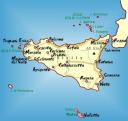
Some guidebooks I’ve seen advise readers to pass quickly through Messina, the port city at the northeastern tip of Sicily and your likely first stop if you’re coming from Calabria across the Strait of Messina.
I got a different impression of this bruised and battered place, though, and I plan on going back for a more thorough look around; lucky for me I know a few people, including one of P’s sisters, who live there.
In case you’re wondering, we got to Messina pretty easily, taking the train from Lamezia Terme to Villa San Giovanni for the traghetto–no thanks to the conductor on the train, mind you. As our tickets only said “Messina” with no information on changing trains, etc., I asked him what we’d have to do to get to Messina. He said to get off the train, walk under the “sottopassaggio” and get on the boat. Or swim.
Witty, wasn’t he?
He neglected to mention, of course, *where* we’d have to get off that train, but luckily we knew that the ferries ran from Villa San Giovanni, so everything went smoothly from there; we even made fast friends with a nice Italian man who, upon hearing us speaking English, told us that he had lived in Connecticut for 17 years.
We only spent a morning touring Messina and my camera batteries were dead, so I don’t have *too* much photographic evidence for you (at least not of my own), but I hope you enjoy this quick virtual tour through Messina anyway.
* Basic facts about Messina *
Messina was founded way back in the 8th century B.C. by the Siculans who named the city “Zancle” or sickle because of its peculiarly-shaped harbor. The Greeks took over in the 5th century, and later, Anaxilas, tyrant of Reggio, gained control and changed the city’s name to Messene in honor of his homeland, Messenia.
As all of southern Italy, Messina endured many rulers including Carthaginians, Romans, Goths, Greeks, Arabs, and Normans, but the history of the city is probably best summed up in one word: disaster.
From the Bubonic Plague (1743) to cholera (1854) to earthquakes (1747, 1894, 1908) to war-time leveling (1848, 1943), Messina has been the victim of an enormous amount of malocchio. See, and you wonder why guys grabbing their crotches for protection is such a big deal round these parts.
Other protection is Messina comes in the form of its patron saint, the Madonna della Lettera (Madonna of the Letter), who is said to have sent the citizens of Messina a letter promising them eternal protection for their recent conversion to Christianity.
A gilded Madonna blesses each new arrival into the port of Messina from her spot of honor atop one of the towers of Forte San Salvatore, built in 1546 by Spanish viceroys.
You can read more about the Madonna della Lettera at Cherrye’s place.
* Favorite things I saw in Messina *
OK, like I said, we didn’t get to see too much, but here are three of my favorite things that I saw in Messina:
* The Bell Tower of the Cathedral of Messina *
Yes, that’s a brochure (remember: dead camera batteries), and no, we weren’t allowed to go up inside “the biggest and most complex mechanical and astronomical clock in the world” because we were told it was too windy (was a perfectly lovely day). It was still pretty cool from the outside, though, especially at noon when the theatrics started.
The lion roared, the cock crowed (or at least he tried to–technical difficulties), and all of the biblical scenes were set into motion, including one representing the Madonna della Lettera, to the tune of “Ave Maria.” Every inch of this clock, which was installed in 1933, symbolizes something.
If you’d like to read more about our clock experience, check out Cherrye’s post “The Ding Dong, The Lion’s Roar, and the Ave Maria.” Also feel free to contact me and I can send you a scan of the brochure with all the details.
* The Fountain of Orion & the Fountain of Neptune *
OK, these are really two things, but since they’re both fountains, I’ve grouped them together.
La Fontana di Orione, the Fountain of Orion, is found in front of the Cathedral and was done by Florentine Giovanni Angelo Montorsoli in 1547. Orion is Messina’s mythical founder, and the fountain was built to honor both him and the city’s first aqueduct.
La Fontana di Nettuno, the Fountain of Neptune, is found, not surprisingly, overlooking the sea. If it looks to you like he’s telling the waters in front of him to calm down, well, your eyes aren’t deceiving you–that’s precisely his role in this disaster-ridden city.
The current fountain is actually a replica of Montorsoli’s original one, created in 1557, that has been heavily damaged. You can find the original marble Neptune at Messina’s Museo Regionale.
* La Galleria Vittorio Emanuele III *
La Galleria Vittorio Emanuele III was constructed between 1924 and 1929 under the guise of Messina’s own Camillo Puglisi Allegra. It’s a one of a kind building in the south of Italy with shops and restaurants surrounded by beautiful architectural and decorative elements.
A very special grazie to Vanessa for playing tour guide and hostess, and a ciao to our new friend Hilary (she of the *delicious* cheesecake)!
Also be sure to check out my Flickr Sicily 2008 Photo Collection; I’ll be adding photos daily!
————–
[tags]messina, sicily, sicilia, neptune, madonna della lettera, bell towers, campanile, fontana di Orione, fontana di nettuno, galleria vittorio emanuele III[/tags]

